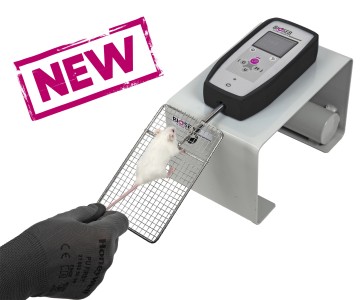Authors
J. E. Davies, S. Sarkar, D. C. Rubinsztein.
Lab
Addenbrooke's Hospital, Cambridge Institute for Medical Research, Department of Medical Genetics, Cambridge, UK.
Journal
Human Molecular Genetics
Abstract
Oculopharyngeal muscular dystrophy (OPMD) is an autosomal dominant disease that presents in the fifth or sixth decade with dysphagia, ptosis and proximal limb weakness. OPMD is caused by the abnormal expansion of a polyalanine tract within the coding region of poly(A) binding protein nuclear 1 (PABPN1). The resultant mutant PABPN1 forms aggregates within the nuclei of skeletal muscle fibres. We have previously described a transgenic mouse model of OPMD that recapitulates the human disease and develops progressive muscle weakness accompanied by the formation of aggregates in skeletal muscle nuclei. The chemical chaperone trehalose has been used effectively to alleviate symptoms in a mouse model of Huntington's disease and is thought to elicit its effect by binding and stabilizing partially folded polyglutamine proteins and inhibiting the formation of aggregates. Here, we show that trehalose reduces aggregate formation and toxicity of mutant PABPN1 in cell models. Furthermore, oral administration of trehalose attenuated muscle weakness, reduced aggregate formation and decreased the number of TUNEL-labelled nuclei in skeletal muscle in an OPMD transgenic mouse model. Thus, anti-aggregation therapy may prove effective in the treatment of human OPMD.
BIOSEB Instruments Used
Grip strength test (BIO-GS3)
Source :
http://hmg.oxfordjournals.org/content/15/1/23.short#corresp-1

 Douleur - Allodynie/Hyperalgésie Thermique
Douleur - Allodynie/Hyperalgésie Thermique Douleur - Spontanée - Déficit de Posture
Douleur - Spontanée - Déficit de Posture Douleur - Allodynie/Hyperalgésie Mécanique
Douleur - Allodynie/Hyperalgésie Mécanique Apprentissage/Mémoire - Attention - Addiction
Apprentissage/Mémoire - Attention - Addiction Physiologie & Recherche Respiratoire
Physiologie & Recherche Respiratoire




































 Douleur
Douleur Système Nerveux Central (SNC)
Système Nerveux Central (SNC)  Neurodégénérescence
Neurodégénérescence Système sensoriel
Système sensoriel Système moteur
Système moteur Troubles de l'humeur
Troubles de l'humeur Autres pathologies
Autres pathologies Système musculaire
Système musculaire Articulations
Articulations Métabolisme
Métabolisme Thématiques transversales
Thématiques transversales Congrès & Meetings
Congrès & Meetings 